How to Cook Farro
Learn how to cook perfect farro with this foolproof recipe. Farro is a versatile whole grain that is chewy and nutty—just delicious!
Updated by Kathryne Taylor on August 29, 2024
30Comments
Jump to recipeLet’s talk about farro! Have you tried it? Farro is a whole grain that has been cultivated for thousands of years. In fact, it may be the world’s oldest cultivated grain. We’ve even found it in Egyptian tombs.
I love farro for its reasonably quick cooking time, nutty flavor and satisfying chewy texture. Farro is a hearty addition to salads and soups. It’s especially wonderful with some garlic and olive oil stirred in while it’s still warm.
Farro is a nice alternative to wild rice, brown rice, quinoa and other whole grains. It’s a healthy plant-based source of protein, iron and fiber. As a bonus, it freezes and defrosts well. So, you can make a big batch to enjoy over the next few months.
Today, I’m clearing up some common farro misconceptions and sharing my go-to farro cooking method. Keep on reading for more about farro!
Let’s Clear Up Some Farro Confusion
Farro is pronounced FAHR-oh. It sounds a lot like Egyptian pharaoh, but with more of an “ah” sound in the first syllable. I’m not sure I ever get it quite right.
Farro is not gluten free, so it is not suitable for celiacs. Farro is an ancient strain of wheat. Some people with gluten sensitivities tolerate farro better than conventional wheat, but experiment at your own risk.
Farro can actually be one of three whole grains that fall under the Triticum genus. Most often in the U.S. and Europe, the term farro refers to emmer wheat, also known as farro medio, medium farro or Triticum dicoccum. Farro can also refer to einkorn (also known as farro piccolo, small farro or Triticum monococcum), or spelt (also known as farro grande, large farro or Triticum spelta).
Farro can be entirely unprocessed (whole) or processed to varying degrees. True whole grain farro retains all of its nutrients and fiber, but is hard to find and takes longer to cook. Pearled farro has been stripped of its outer layer of bran, so it contains less fiber and nutrients, but cooks a lot faster. Semi-pearled farro is in between the two, so it’s lightly processed and cooks at a medium rate.
Typically, your bag of farro won’t say if it’s pearled, semi-pearled or whole. Frustrating, right? We’re going to cook the farro in an abundance of water until it’s cooked through, so the only variable is the cooking time.
Watch How to Make Farro
How to Cook Farro
You’ll find the simple recipe below. The key to cooking farro is to cook it in an abundance of water, which prevents it from getting gummy from the starches. The extra water also gives you more leeway with the cooking time (you won’t run out of water by the time the farro is done, even if it takes longer than expected).
Here are a few more notes and tips:
- Before cooking, add some salt to the water to enhance farro’s inherent flavor.
- Pearled farro will be done in about 15 minutes, while semi-pearled or whole processed farro will take 25 to 40 minutes.
- Some recipes suggest soaking whole-grain farro in water overnight. I’ve never soaked and always just cook for as long as necessary.
- Season with additional salt, to taste. For even more savory flavor, stir in a splash of olive oil and a small clove of garlic (pressed or minced).
How to Cook Farro
Learn how to cook perfect farro with this simple technique. One part raw farro yields twice as much cooked farro. As written, this recipe yields 2 cups cooked farro. Multiply as needed.
Ingredients
- 1 cup dry farro
- 4 cups water
- ¼ teaspoon fine salt, to taste
- Optional flavorings: Light drizzle of extra virgin olive oil and 1 small clove garlic (pressed or minced)
Instructions
- Rinse the farro in a fine mesh sieve under cool running water (this step is important to remove any dust and excess starch).
- In a medium saucepan, combine the rinsed farro and at least 4 cups water, or enough to cover the farro by several inches. Add the salt. Bring the water to a boil over medium-high heat, then reduce the heat as necessary to maintain a gentle simmer.
- Cook until the farro is tender to the bite but still pleasantly chewy. Pearled farro will take around 15 minutes; unprocessed farro will take 25 to 40 minutes. Drain well.
- If desired, stir in the olive oil and garlic while the farro is still hot. Season with another pinch or two of salt, as needed. Serve as desired.
Notes
Storage suggestions: Leftover farro will keep well in the refrigerator, covered, for up to 4 days. Or, freeze farro in small portions for up to 6 months. I simply transfer frozen farro to a bowl and microwave until defrosted. Or you can gently drop the frozen farro into a pot of boiling water and cook just until warmed through, then drain well.
Nutrition
The information shown is an estimate provided by an online nutrition calculator. It should not be considered a substitute for a professional nutritionist’s advice. See our full nutrition disclosure here.
3 Recipes Featuring Farro
Here are just three recipes that feature farro, my favorite chewy whole grain. It is a hearty addition to salads, soups and grain bowls. View all of my farro recipes here.
1) Roasted Carrots with Farro, Chickpeas & Herbed Crème Fraiche
Easily gluten free and easily vegan
“I made this with Christmas dinner and wow this was certainly my signature dish! It was scrumptious and so pretty. I was so intrigued by it, I had to make it and so glad I did!” – Leslie
2) Farro and Kale Salad with Goat Cheese
Vegetarian
“Made this tonight….quick, easy and SOOO DELICIOUS. Added a couple extra teaspoons of red wine vinegar per your suggestion and that put it over the top. It will be easier to use more of that never ending kale from the garden this summer!! Thank you!” – Cathy
3) Sweet Potato, Farro, Kale and Chickpea Soup
Vegan
“This soup is delicious! I found your recipe on Friday, made it on Sunday, and am eating it right now and for lunch allll week long. It is sweet, spicy, and hearty. Thanks for sharing the recipe :)” – Christy


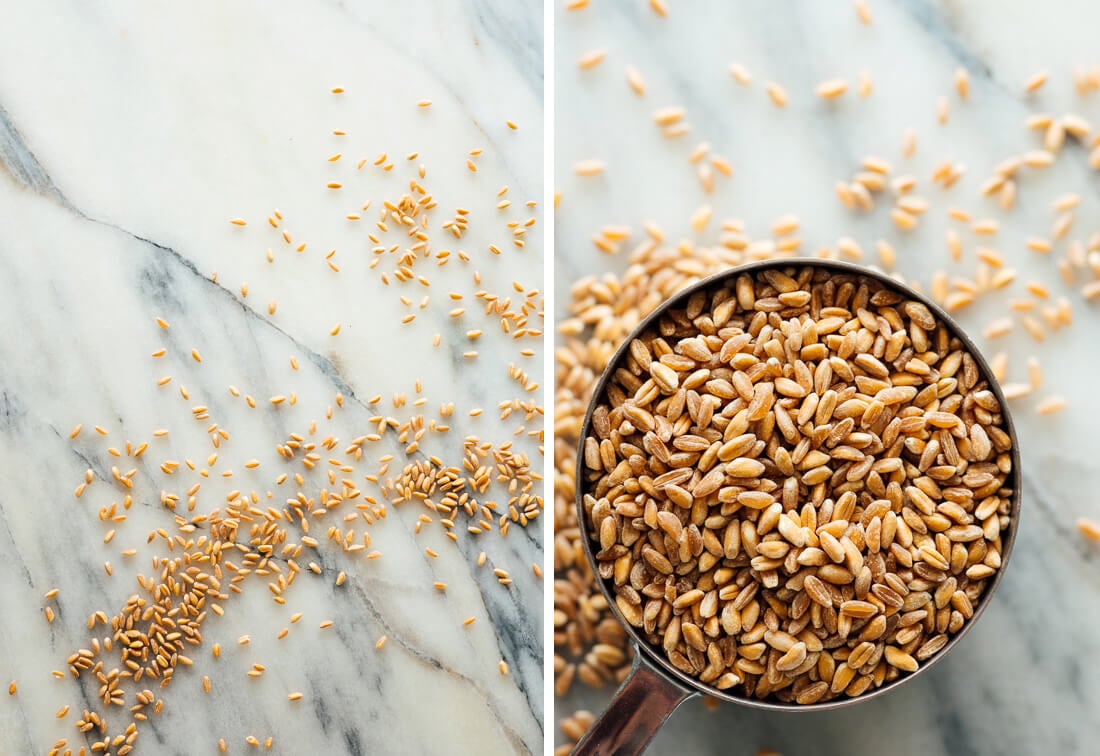
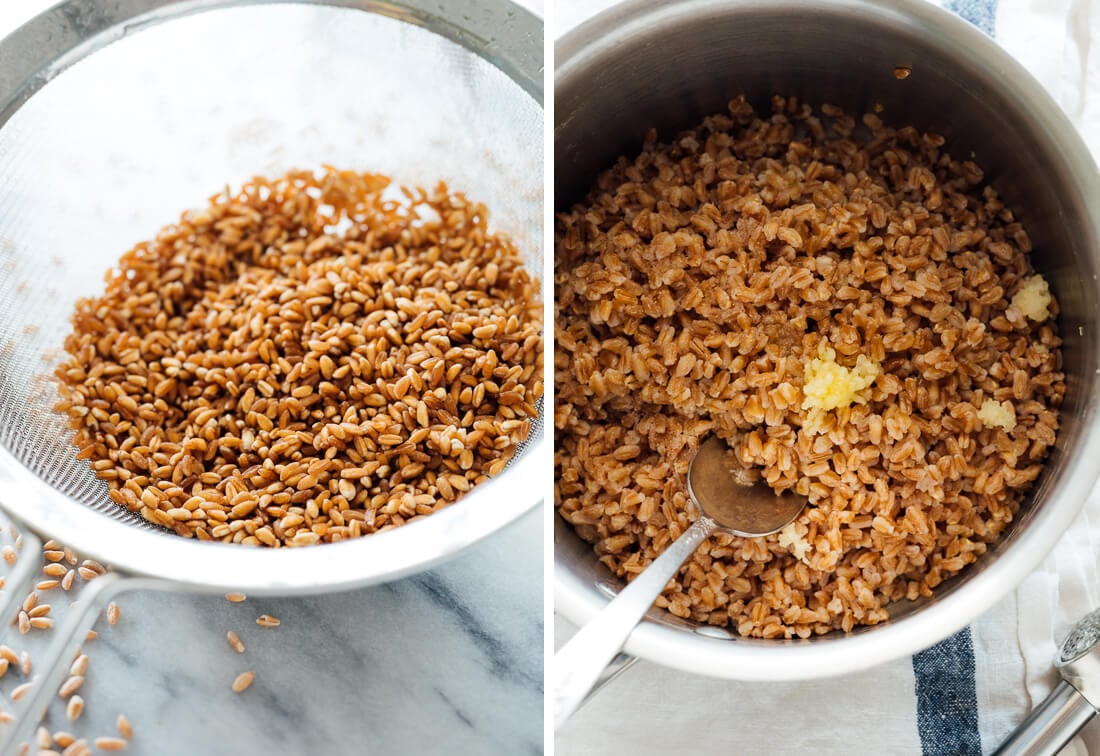
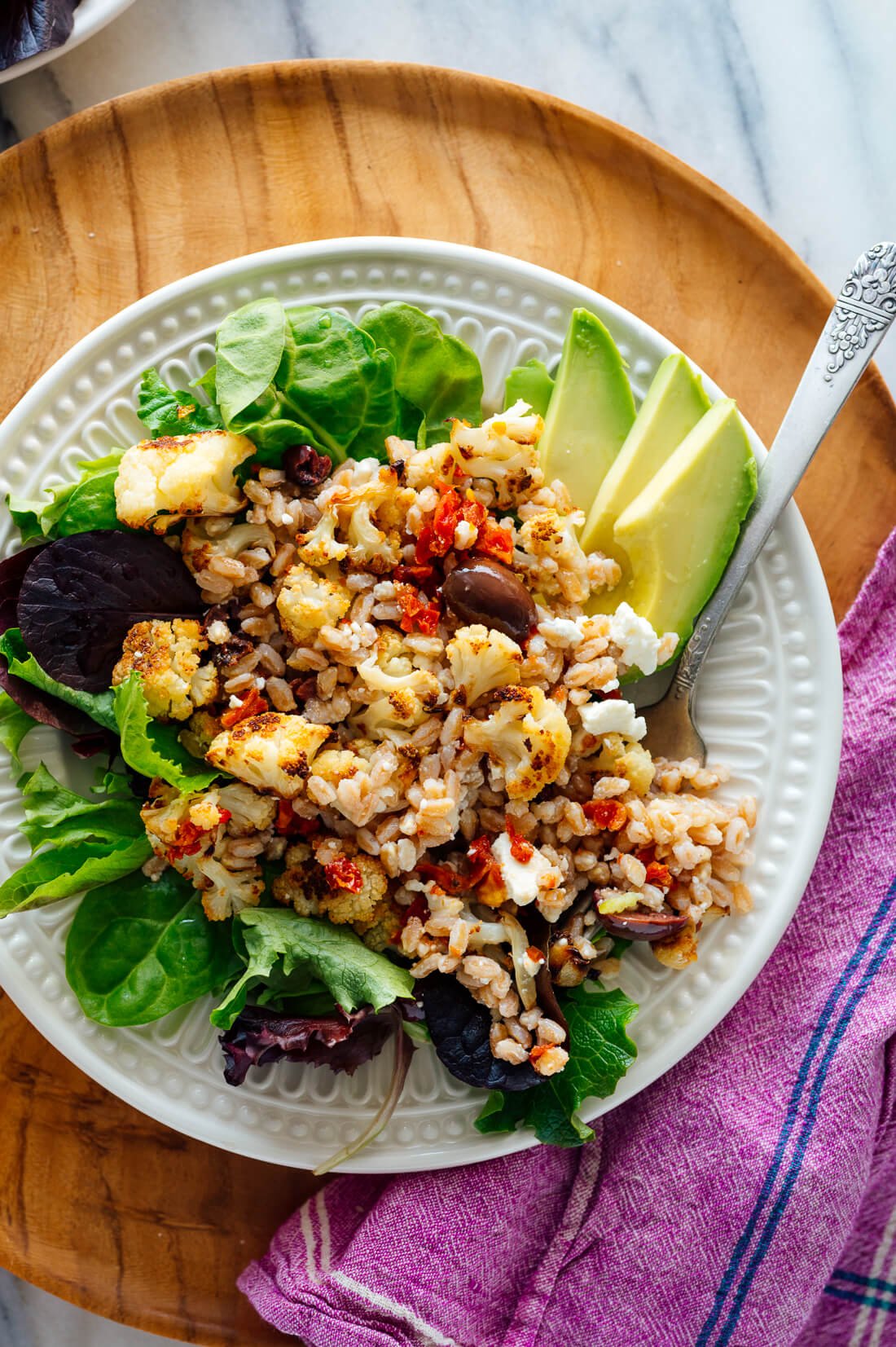
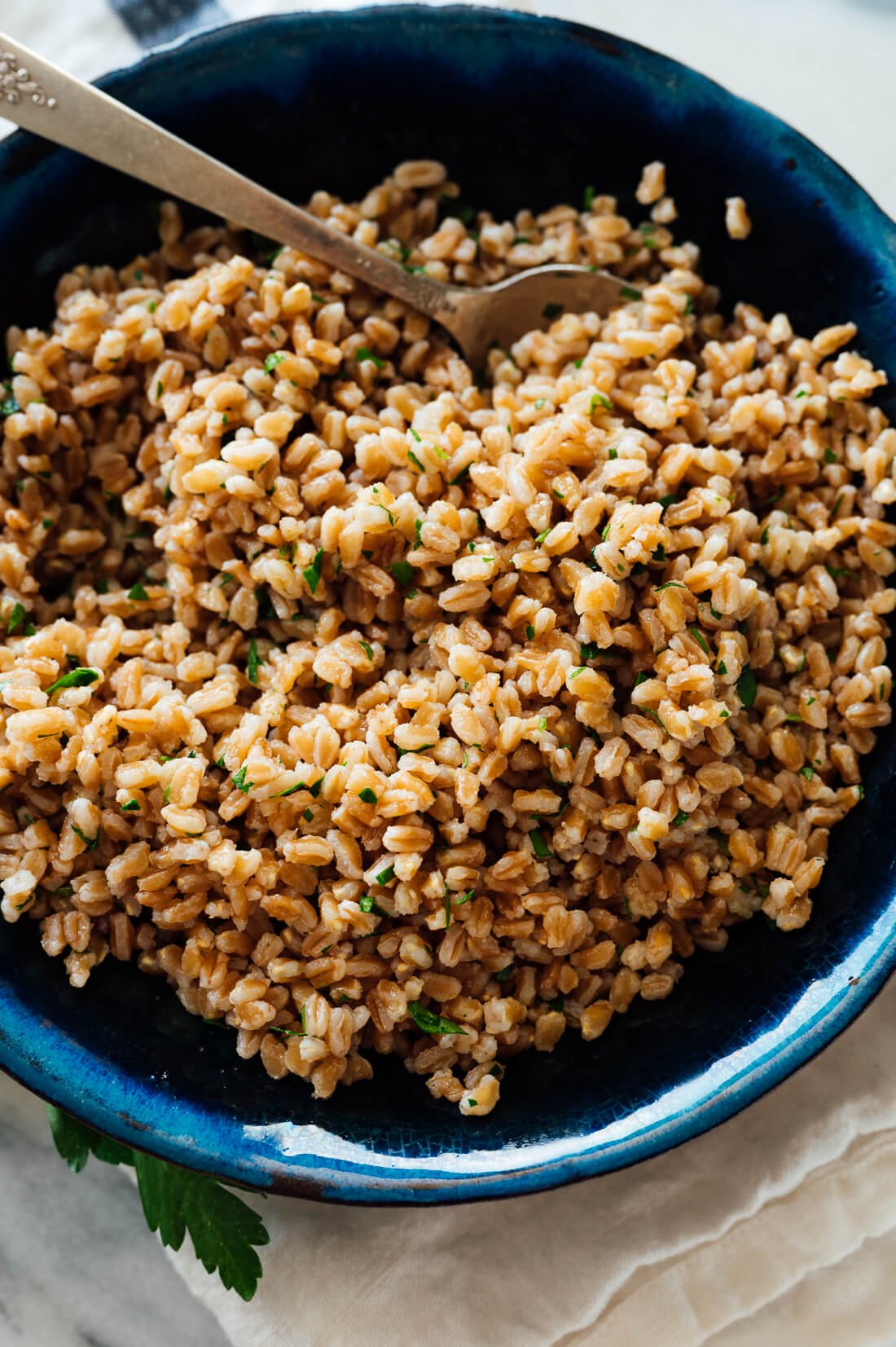
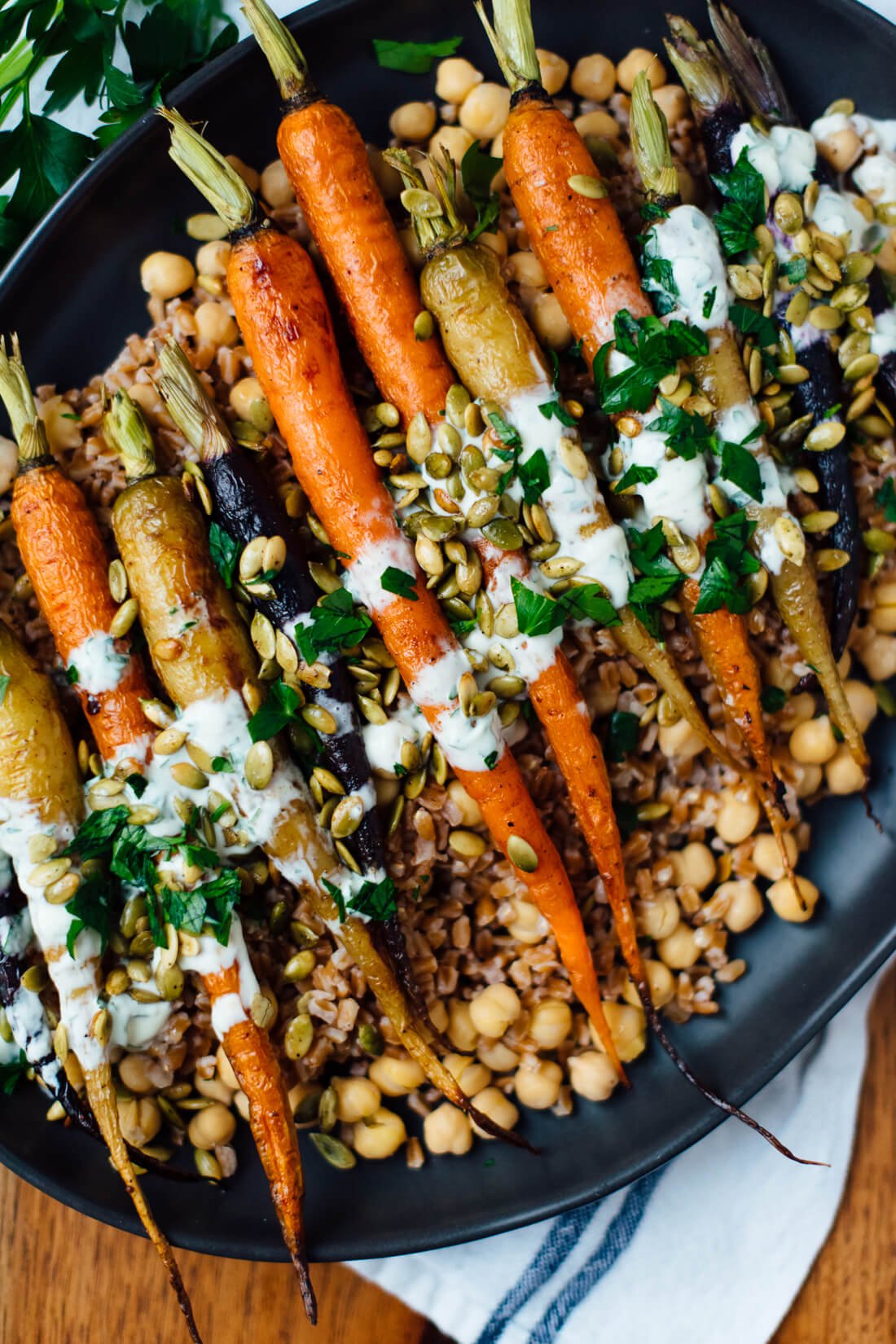
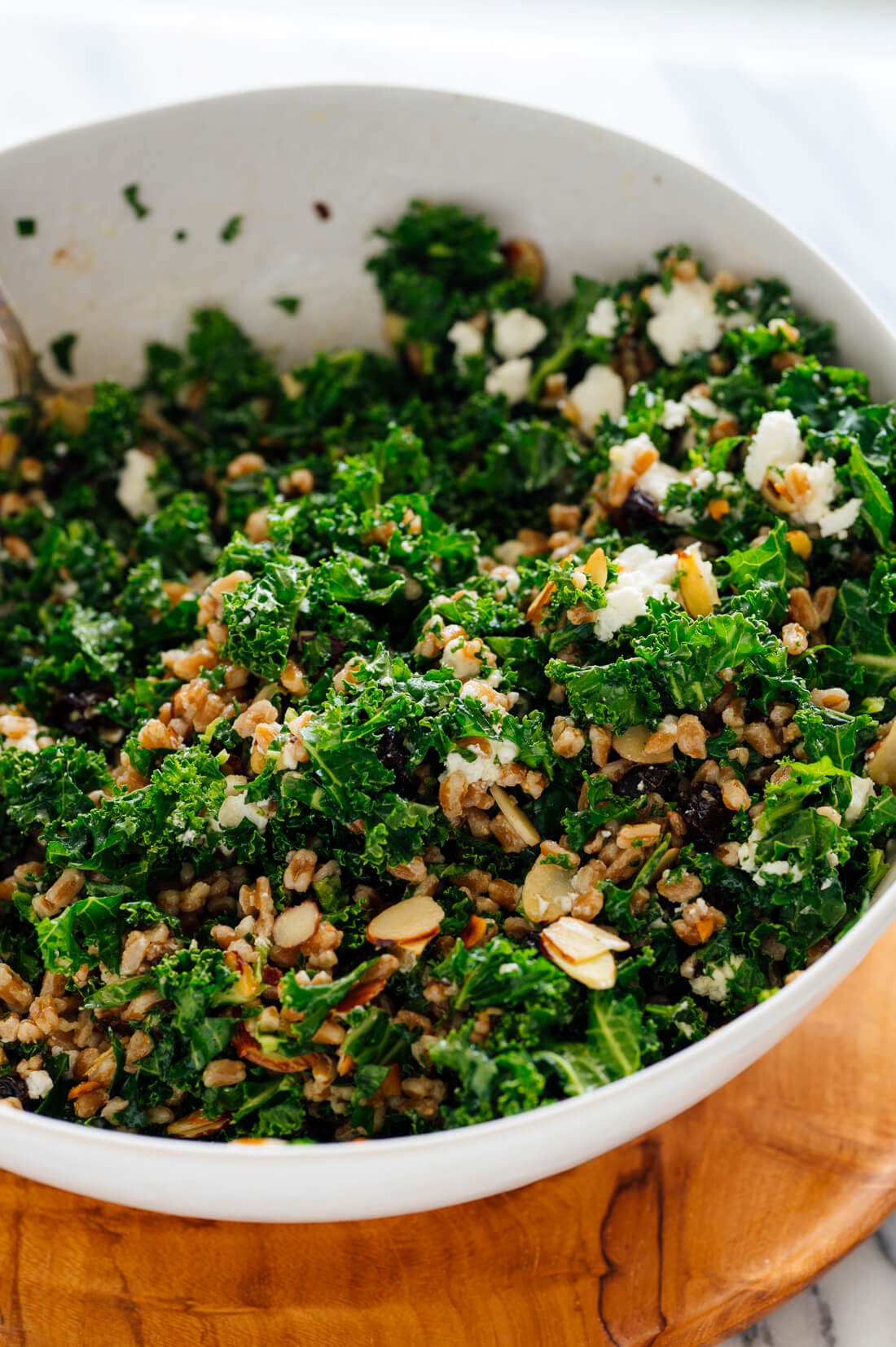
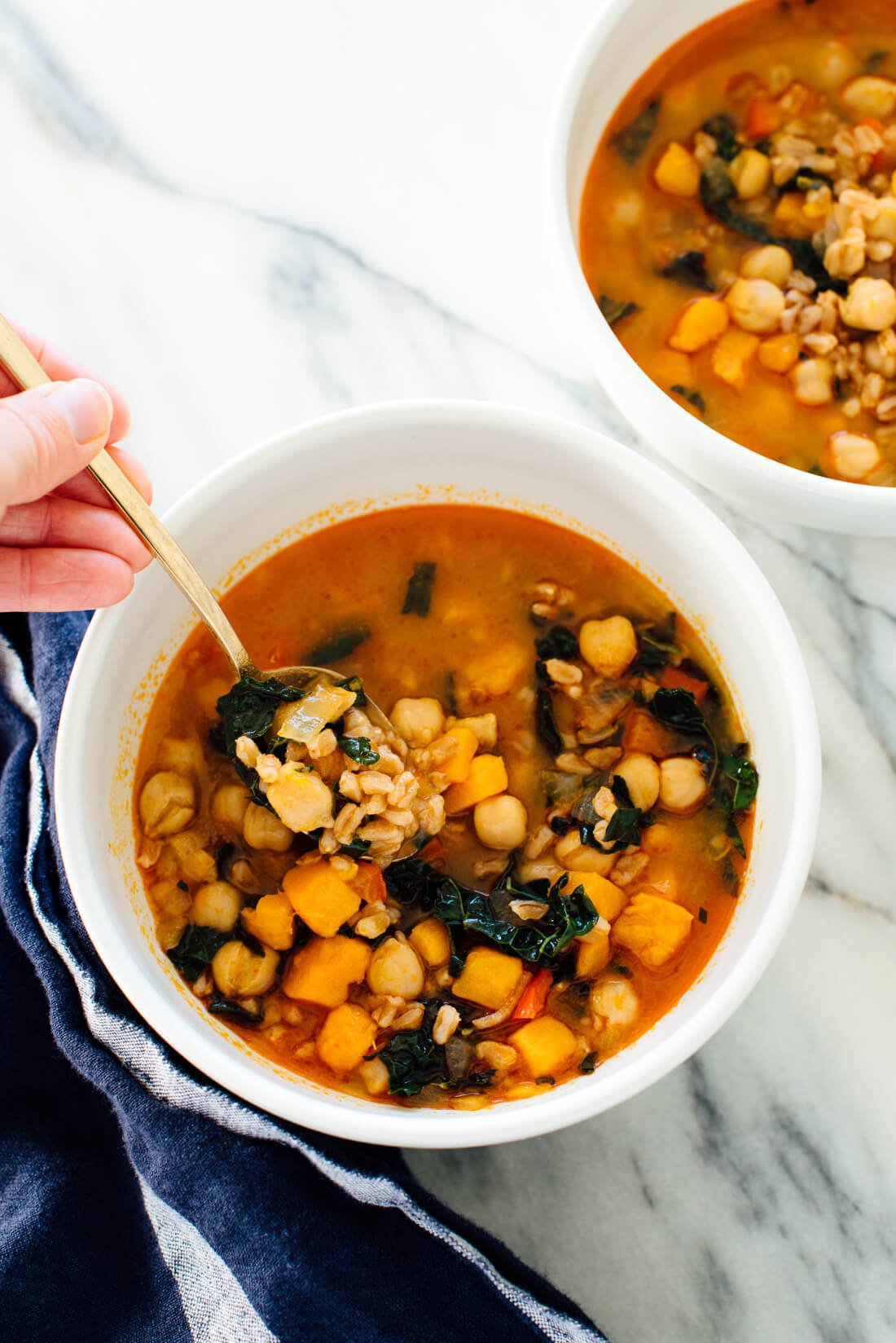
















I love farro! And I love your recipes with farro :) It’s so much tastier and chewier than pasta or rice.
You’re welcome! I’m glad you think so, Julie.
I’ve been wondering how Cookie is doing. Love your website and creative ideas. Thank you for keeping it simple.
Hugs to you and Cookie.❤
Hi Carol! Thank you for your comment. I gave an update in a previous post. She is currently in remission! :)
Wonderful news! Give Cookie a hug for me.
ATK suggest breaking the grains up a bit in a blender before cooking. Have you ever tried this?
Hi Reb, I do tend to consult ATK during my research for recipes. I prefer this method, but that does sound interesting!
You need to try the Baked Farro Risotto from 101cookbooks It is hands down the best farro recipe I have ever tried.
Thanks for the great farro cooking tips!
I love farro and it’s super healthy.
I’m going to make your farro with carrot recipe :)
Sounds perfect, Bella! Thank you for your review.
I sometimes reheat cooked farro, add pure maple sugar and light cream. It makes for a quick and delicious breakfast. I also add warmed fresh fruit such as apples to it.
Kathie M
This looks wonderful. Since we won’t know which type of farro we have (whole, pearled,etc) do you have any suggestions for making farro in a rice cooker?
Hi! Sorry to disappoint, I don’t have other instructions other than stovetop.
You covered all the ins and outs. t thank you
Your recipes never cease to amaze me. I truly appreciate your creativity and use of healthy ingredients.
Hi Kate,
Great to hear the Cookie is doing well.
I love farro. My favorite way to use farro is make a dressing of olive oil, lots of lemon juice & Dijon. I add caramelized onions, roasted red peppers, cucumbers, grape tomatoes & what ever else I have on hand.
Can’t wait to try your farro and roasted carrots.
Happy & Healthy New Year to you & Cookie
Happy New Year, Miriam! Your farro salad just made me hungry. :)
Hi there!
I just picked up some bob’s red mill farro for your roasted cauliflower and farro salad. I’m curious about how well it works to cook it in veggie broth?
Also I’m wondering how well it holds up in soup and stew. My partner loves rice and barley in stew but I find it goes so mushy. It’s fine the first night but I often freeze the extras.
I’m wondering if farro might hold up to freezing better than barley.
Thanks for your hard work on this blog. The recipes are fabulous!
Hi Jen, I find it works cooked best like this if cooking alone, but a mixture of water and broth works too. You can check out Sweet Potato, Kale and Chickpea Soup for a soup application. I find it works great. Reheating can thicken it up, but should be ok to freeze.
I have Farro for breakfast daily. Farro, fresh mushroom, garlic, chicken broth, low sodium soy, and Chinese Hot mustard homemade.
Sounds delicious, Ross! Thank you for taking the time to review.
I. Have einkorn, can I use that? I can get farro, but I like The whole grain . Thanks
Hi Michel, I’m not quite sure if it would be the same without trying it, sorry!
Hi – Thanks for this recipe (and all your others!). It looks good and I’m trying it now. But one question – do you simmer the farro with the pan covered or uncovered?
Also, I think the instructions in the recipe itself forget to mention adding the salt to the cooking water in step 2. From the notes above, it sounds like you suggest adding it to cooking water, as well as any additional salt to taste after cooking.
Thanks!
Hi Anna! Simmer uncovered. Thanks for your comment and the post has been updated!
Fool proof! Thank you!
You’re welcome, Amy! Thank you for your review.
Your website and cookbook have become my go-to. Thanks for the great information on Farro.
I made the Farro…..In a bowl I put romaine lettuce, tomatoes, cooked sweet potato, parsley, Feta, walnuts, a little tahini, and balsamic vinegar with a sprinkle of ground pepper and sea salt. YUM!
I really love your recipes. I have been using them for more than a year. Thanks for all your hard work.